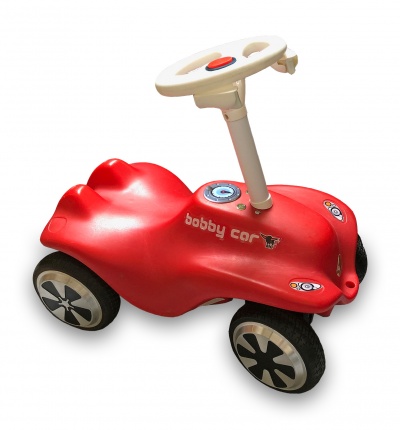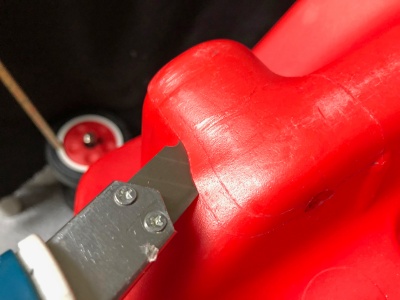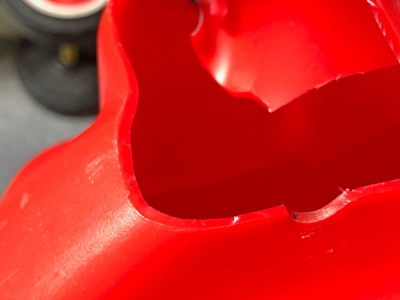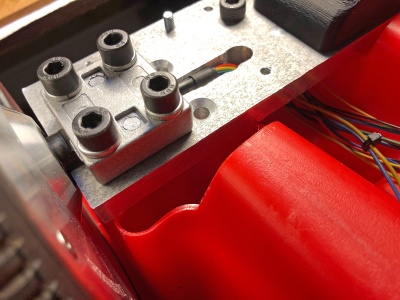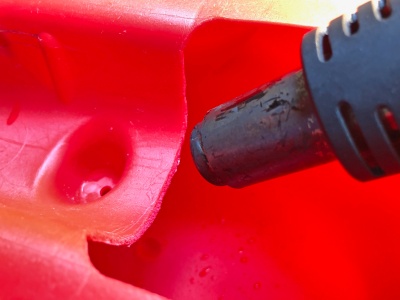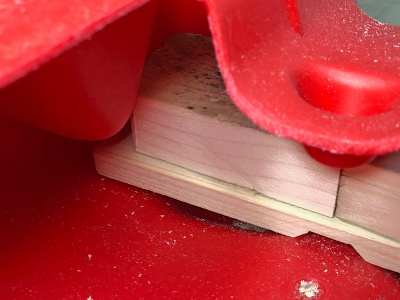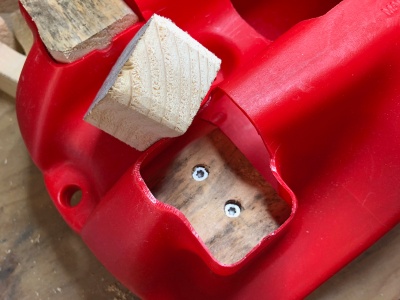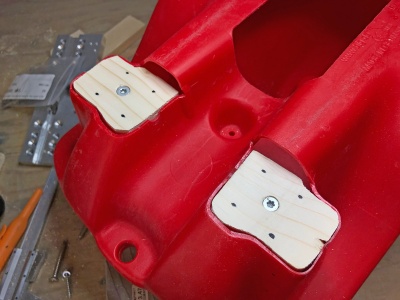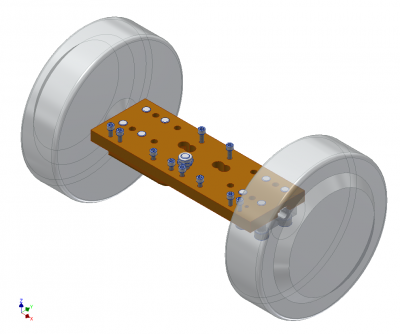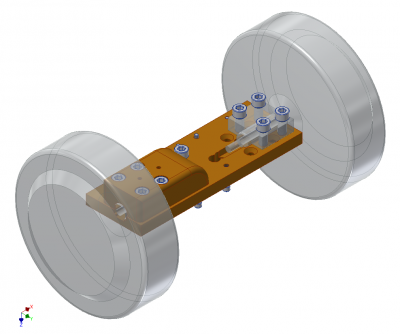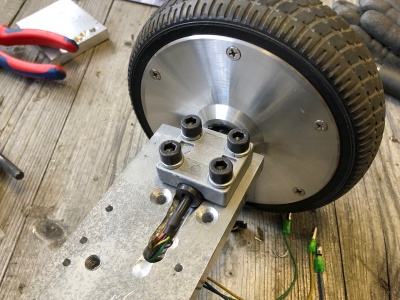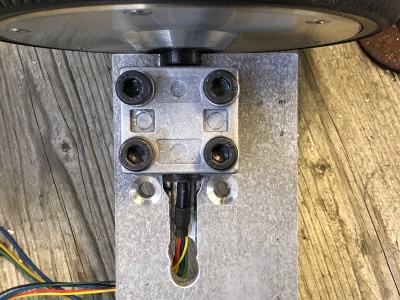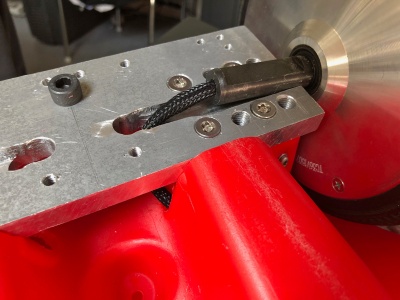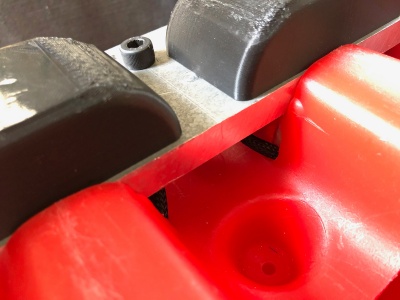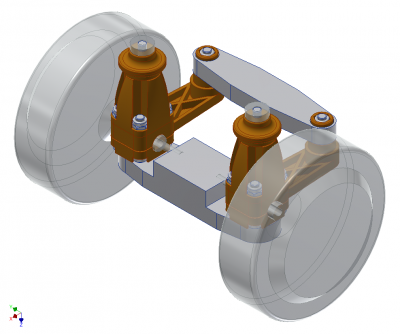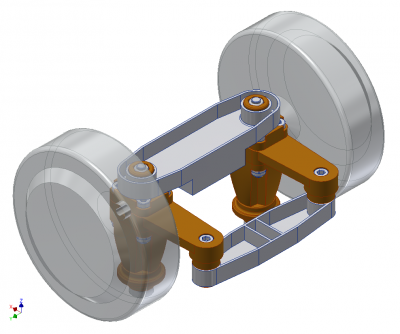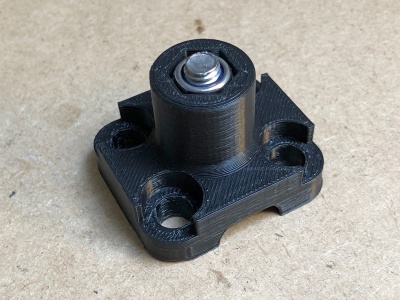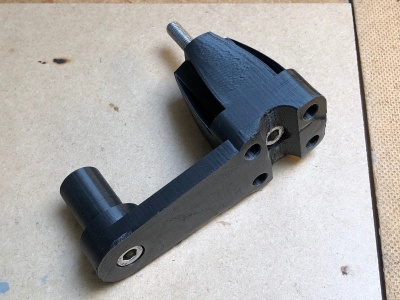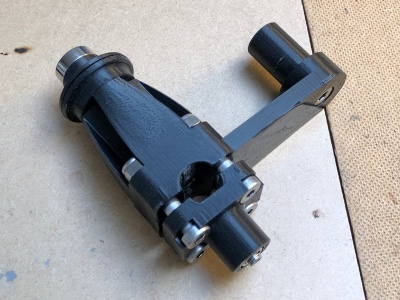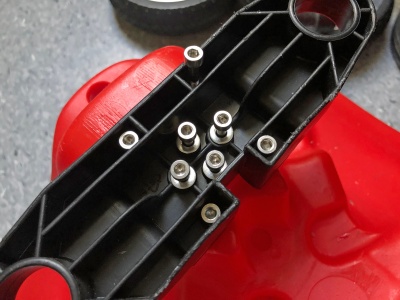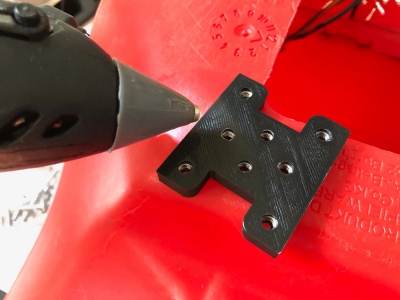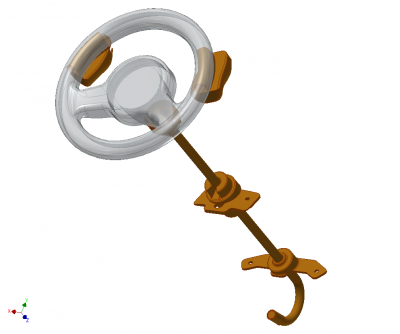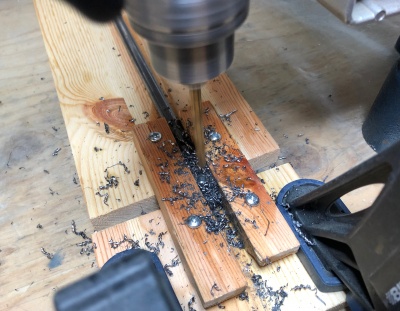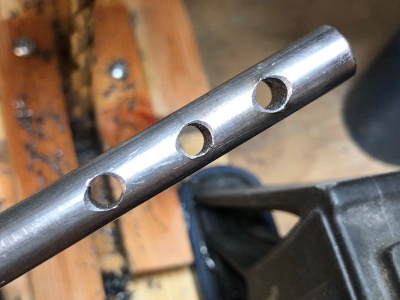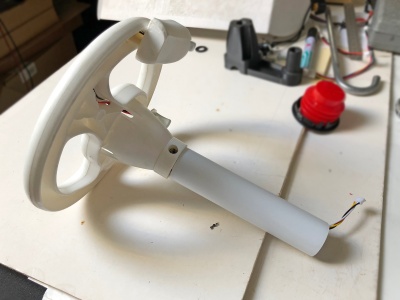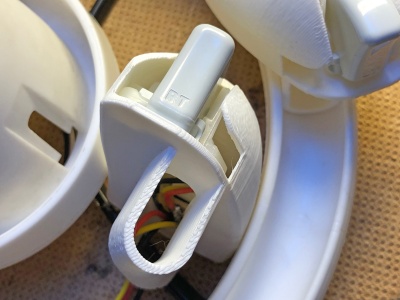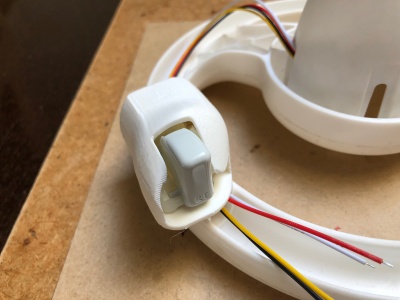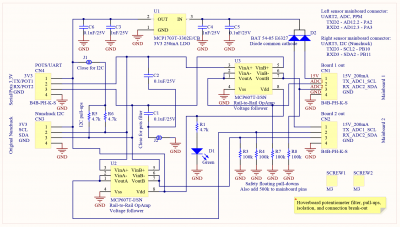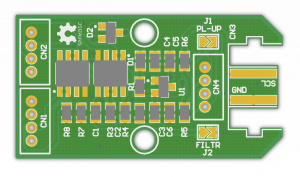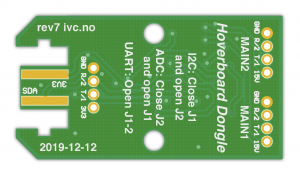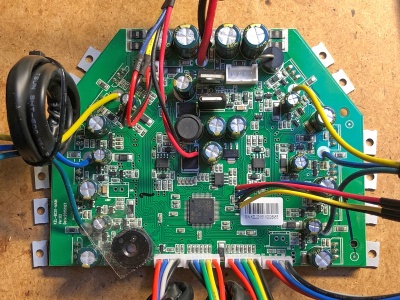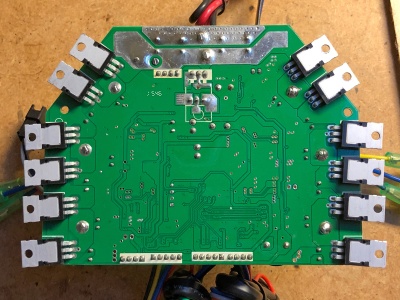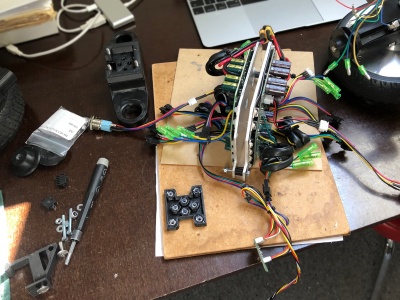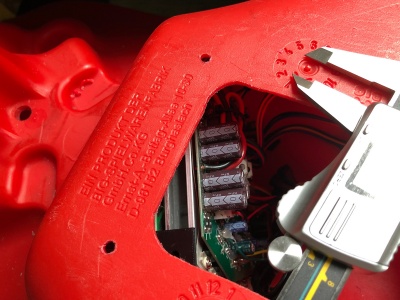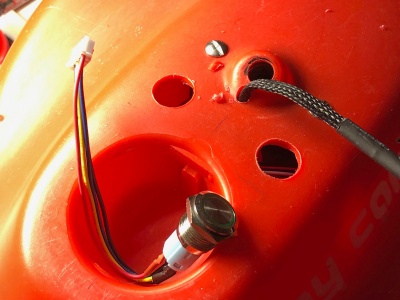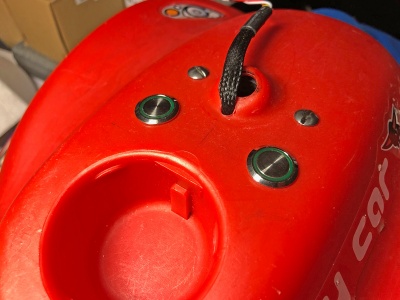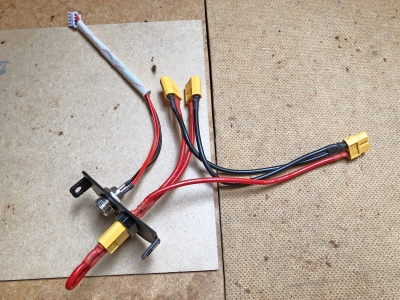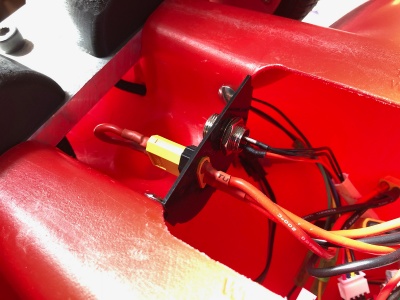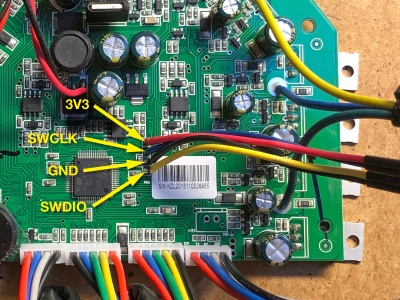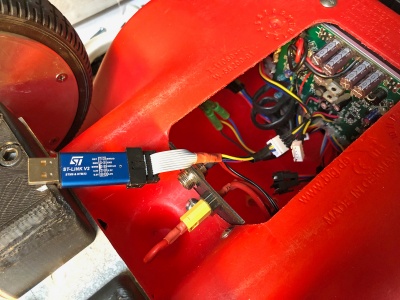Electric Bobby Car Build: Difference between revisions
(→BOM) |
(→BOM) |
||
| Line 314: | Line 314: | ||
| 14x | | 14x | ||
| [https://www.westfieldfasteners.co.uk/Metric-Nuts/Nyloc-Nut-Type-T-Thin-M8-A2-Stainless.html M8 Nyloc Nut Type T Thin 8mm in A2 Stainless - DIN 985] | | [https://www.westfieldfasteners.co.uk/Metric-Nuts/Nyloc-Nut-Type-T-Thin-M8-A2-Stainless.html M8 Nyloc Nut Type T Thin 8mm in A2 Stainless - DIN 985] | ||
| Nuts for | | Nuts for steering assembly | ||
|- | |- | ||
| 4x | | 4x | ||
| Line 336: | Line 336: | ||
| Steering rod bracing support brackets top and bottom | | Steering rod bracing support brackets top and bottom | ||
|- | |- | ||
|4x | | 4x | ||
| [https://www.westfieldfasteners.co.uk/Metric-Nuts/Nyloc-Nut-Type-T-Thin-M4-A2-Stainless.html M4 Locking Nuts Nyloc Type T Thin in A2 Stainless - DIN 985] | | [https://www.westfieldfasteners.co.uk/Metric-Nuts/Nyloc-Nut-Type-T-Thin-M4-A2-Stainless.html M4 Locking Nuts Nyloc Type T Thin in A2 Stainless - DIN 985] | ||
| Steering rod bracing support brackets top and bottom | | Steering rod bracing support brackets top and bottom | ||
Revision as of 21:33, 7 December 2019
This is the electric motor upgrade build log of a Bobby Car using two Hoverboard. The end result will have four motors, one per wheel, two Xbox 360 potentiometers as throttle and brake on the stock steering wheel, and two push buttons to turn on and off each controller separately (e.g. FWD, RWD, AWD). Inside the Bobby Car cavity, the controllers, battery, and cabling will reside.
Most of the front wheel steering assembly has been replaced by 3D-printed parts, which are available for download. The rear wheel base has been replaced with an aluminum mounting plate.
The controllers will be flashed to a new firmware developed by Larsmm which is a fork of NiklasFauth original base.
- Electric Bobby Car CAD package - all the parts in Inventor IPT, STEP and STL formats
Base preparation
Main equipment bay
A slot had to by cut out of the base to allow internal access.
File:Electric bobby car build base cut internal slot1.jpg File:Electric bobby car build base cut internal slot2.jpg
Two rear indentations were cut to insert the wooden base structure which later will be used to mount the aluminium wheel base plate. These are cut at the same height as the new front wheels, so the base is level. It is an advantage to prepare the back wheel base before cutting the slots.
To remove sharp edges and to release stress areas, the cut edge was heat gun finished.
Rear wheel structure
The rear wood structure consists of one cross beam and six smaller wood pieces to fill the new slots. The load of the drive will nicely be distributed to the wheels and ground, increasing the max. driver weight to over 100kg.
Each wooden piece was fastened to the parent piece, making sure to use a different screw pattern for each layer to avoid conflicts.
Mounting the wooden structure to the plastic base was done by nine wooden screws through the side of the rear walls, linking each layer of the internal structure. Using washers to distribute the load as wide as possible.
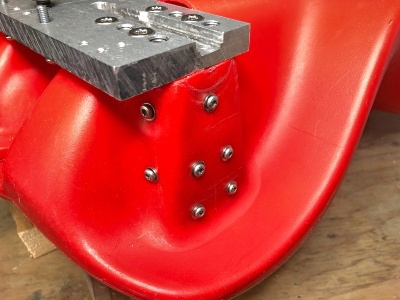
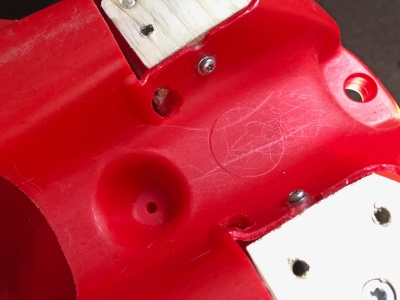 File:Electric bobby car build base rear mounting structure3.jpg
File:Electric bobby car build base rear mounting structure3.jpg
Rear wheels
All the parts of the stock front and rear wheels was removed, only a few of the front assembly was reused.
- Rear wheel parts included in the CAD package - all the parts in Inventor IPT, STEP and STL formats
Wheel base plate
As much of the drivers weight will be over the rear wheels, the wheels will be mounted to an 200x70x12mm 6061 aluminium base plate. Slots and screw holes were routed and drilled/tapped out using regular home/garage gear.
- The design of the rear wheel plate can be downloaded here
File:Electric bobby car build wheels rear plate1.jpg File:Electric bobby car build wheels rear plate2.jpg File:Electric bobby car build wheels rear plate3.jpg
Mounting wheels
Both wheels are mounted to the base plate by sandwiching the axle between the stock Hoverboard bracket using four screws.
Axle cover
The axle and motor wires are directly exposed and could be damaged. A 3D-printed cover screws in place over this area.
 File:Electric bobby car build wheels rear cover2.jpg
File:Electric bobby car build wheels rear cover2.jpg
Wiring
The wiring coming from the motor is feed through the base plate and then inside the base through a small hole just underneath the front end of the plate.
The wires are protected by a cable sleeve.
Front wheels
The front wheel assembly was modeled and new parts designed to incorporate the motors into the front stock wheel structure. Wheel clearance height was increase/raised by 15 mm to all the bigger radius Hoverboard wheels to fit. All parts were 3D-printed but strength was designed into the parts, primarily using long through screws to relieve much of the sheer stresses on the plastic.
- Front wheel parts included in the CAD package - all the parts in Inventor IPT, STEP and STL formats
Full aluminium CNC parts or metal support inserts would be a future upgrade here.
Wheel assembly
The assembly consists of three main parts and six screws along with six nuts to keep it all together. A skateboard bearing lessens some of the pressure and tear on the base plastic.
Wheel bracket
Both wheels are kept in alignment by the stock front wheel bracket. This is screwed onto the base frame. The bracket has been reinforced using eight screws with a counter plate instead of the stock two threaded screws.
Wiring
The wiring coming from the motor is feed a small hole just in the middle of steering motion to minimize cable stress.
The wires are protected by a cable sleeve.
Steering
Much of the steering assembly was redesigned from ground, except for the steering wheel itself. Much work went into figuring out how the throttle and brake wiring would be routed and protected. Addition base strength was also needed.
Rod bend
To make the steering usable, the steering rod had to be lengthened by approx. 20 cm including the end mounting holes. The new rod was based on the stock dimension and bend, just longer on one end to put the steering wheel at a comfortable position.
Using a Ø10mm stainless steel rod, one end was heated using a simple butane camping gas stove to heat the metal to make it pliable. Stick it in vise and bend it to the approx. radius. Then put the entire bend into the vise and squeeze it into the right dimension, using the stock as a template.
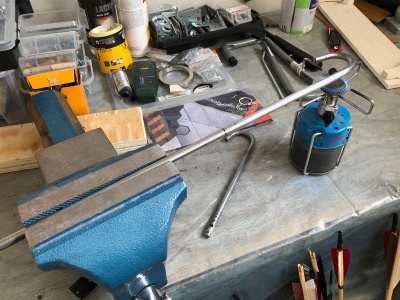
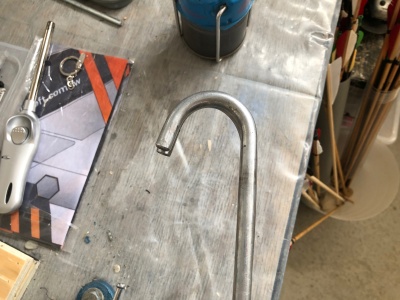 File:Electric bobby car build steering rod3.jpg
File:Electric bobby car build steering rod3.jpg
Rod length and mounting
Try the rod on the Bobby Car with the steering wheel next to it to find the correct steering height, approx. +16cm on the stock length. Mark the spot and cut the rod. To allow for different steering wheel heights, I made three different mounting holes. This also requires a through hole in the plastic on the steering wheel.
To keep the rod from falling through on assembly, an outer Ø32mm white PVC tube keeps the steering wheel at the correct position and protects the wiring going to the controller.
Base rod support
As there will be a lot of load on the steering rod, so additional support has been added to the top and bottom side where the rod protrudes through the base.
File:Electric bobby car build steering rod support1.jpg File:Electric bobby car build steering rod support2.jpg File:Electric bobby car build steering rod support3.jpg
Throttle and brake
Using NiklasFauth method for the throttle and brake levers by mounting them on the front side on the steering wheel. A special 3D-printed holder keeps the trigger, potentiometer and support board in place. All put in place on the steering wheel using hot glue. An upgrade here would be a through screw.
Wiring the potentiometer is simple, 3V3 (red), analog out (yellow, mid-pin), and ground (black). This connects to my break-out board located inside the steering wheel column.
Electronics
Break-out board
This is board makes it easier to finish the build. It has easy to connect plugs for the throttle and brake, analog signal filtering, master and slave throttle isolation - where one driver board can be turned off without interfering with the other.
Inspired by the Jan Henrik break-out boards.
Motor wiring
Connecting the front motors to controller is straight plug and play, but the rear main motor wires needed to be extended 10 cm to reach the controller.
The hall-effect wires were easily extended using custom made 20cm extension wires.
Controllers
The controllers are essentially identical, except for slightly different caps, power transistors, and wiring method. Both are from Hoverboard productions in 2015. Both rock the same STM32F103 ARM Cortext-M3 MCU.
Both controllers are mounted back-to-back and installed vertically using two flat head screws.
Battery
This build is using the stock 10S 36V battery from the original Hoverboards. Although a 12S 44.4V battery is supported by the controllers.
The battery is kept secure by a strap around two slots in a Lexan cover plate.
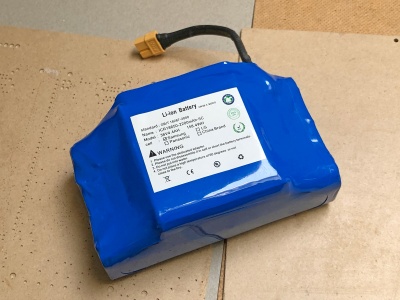 File:Electric bobby car build battery2.jpg
File:Electric bobby car build battery2.jpg
Power buttons
As this is a four motor, two controller setup, I wanted to have the possibility to power-on each controller separately. This would allow for FWD or RWD, depending on the occasion. This requires the break-out board I designed in order to isolate the two controllers so they would not power each other or block the throttle/brake signal.
Power plug and charging
A 3D-printed bracket holds the power plug and charging port in place just rear of the equipment bay slot.
Flash firmware
The Hoverboard controllers expose the programming port, requiring only wires or header to be soldered.
Make sure the power-button is connected as this is required to put the MCU into DFU flashing mode. Connect the ST-Link V2 Mini programmer to the mainboard.
GND -> GND SWDIO -> DIO SWDCLK -> CLK 3V3 unconnected, powered by board
Press and hold the power-button while executing the following commands.
Unlock MCU:
openocd -f interface/stlink-v2.cfg -f target/stm32f1x.cfg -c init -c "reset halt" -c "stm32f1x unlock 0"
Flash MCU:
openocd -f interface/stlink-v2.cfg -f target/stm32f1x.cfg -c "reset halt" -c "stm32f1x mass_erase 0" -c "flash write_bank 0 test_set_led_on.bin 0" -c "reset run"
References
- Larsm Allrad e-Bobby Car - great write up and custom firmware fork
- Niklas Fauth Hoverboard firmware hack - original firmware
- CCC GPN18 HowTo: Moving Objects - great talk
- Build Instruction: TranspOtter - Another build, lots of helpful pictures
- Fisch's detailed build guide - great documentation of the assembly
- Fisch's trailer build - trailer for the Bobby Car
- Jan Henrik breakout boards - PCBs for easy connection to serial and Nunchuck
- Peter Pötzi Electric Bobby-Car
BOM
General parts
| Quantity | Description | Destination |
|---|---|---|
| 1x | Big New Bobby Car | Main base |
| 2x | Xbox 360 Game controller | Throttle and brake potentiometer |
| 2x | Hoverboard STM32 MCU | Motor wheels |
| 1x | ST Link V2 compatible programmer | Flash new firmware |
| 1x | Aluminium 6061 200x70x12mm plate | Rear wheel plate |
| 1x | Stainless steel rod Ø10mm x 100cm | Steering wheel rod |
| 1x | PVC Ø32mm 50cm tube | Steering wheel height and wire protection |
| 1x | XT60 connectors | Power plug and power distribution |
| 2x | Ball Bearing 608ZZ | Front wheel load distribution |
Screws
